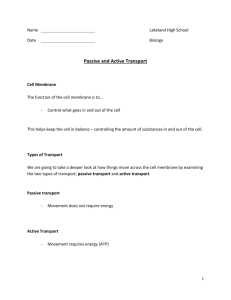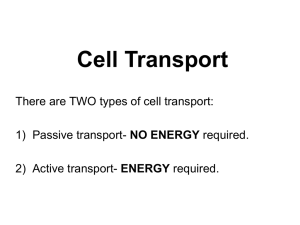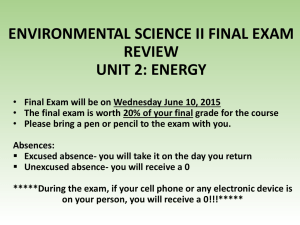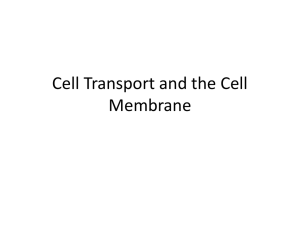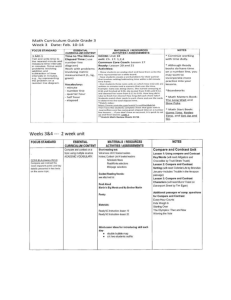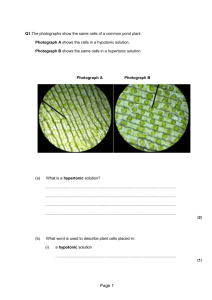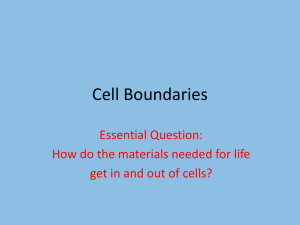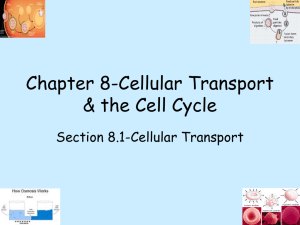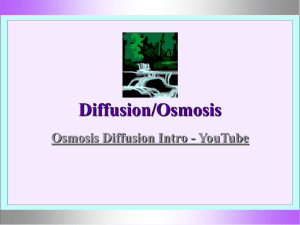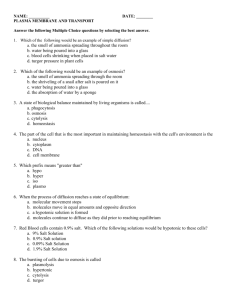Section 7
advertisement
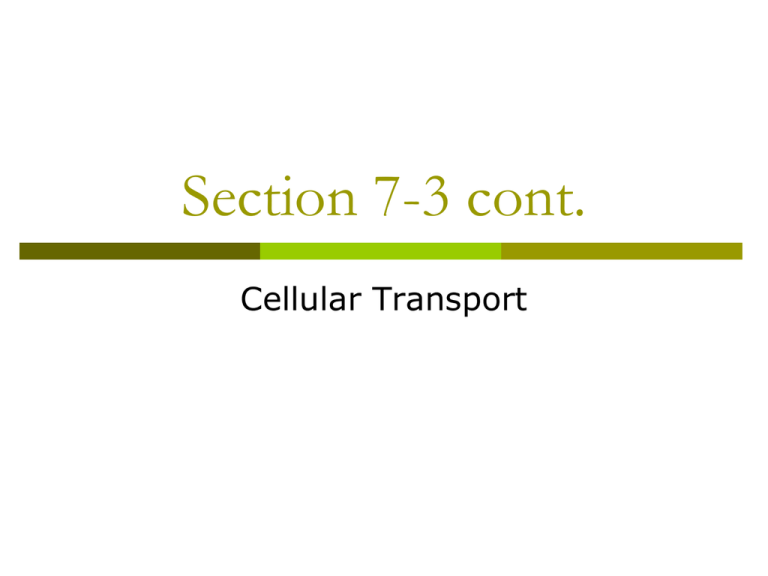
Section 7-3 cont. Cellular Transport Passive Transport Does not use energy 1. Diffusion Movement of particles from an area of higher concentration to an area of lower concentration. Dynamic Equilibrium - Tries to reach an equal concentration inside and outside the membrane 2. Osmosis – Diffusion of Water 3. Facilitated Diffusion Passive transport of materials across the plasma membrane with the aid of transport proteins. Move from high to low concentration Transport proteins provide openings for particles to pass through Move molecules that may not be soluble in lipids or may be too large to pass through the pores in the cell membrane. Suppose that a unicellular protist lives in a solution that is 5% saltwater. Dr. Stapleton moves the protist to another saltwater solution to study the rate of osmosis. Which of these solutions would cause the protist to lose mass at the greatest rate? 25% 25% 25% 25% 1. 2. 3. 4. 3% saltwater solution 4% saltwater solution 5% saltwater solution 6% saltwater solution 1 2 3 4 Three Types of Solutions 1. Isotonic – concentrations are the same inside the cell as they are outside the cell Three Types of Solution Cont. 2. Hypotonic – concentration of substances is lower outside the cell than the concentration of substances inside the cell. Hypotonic cont. The cell swells and may burst in animal cells As a plant cell swells, the cell wall supports the cell so it won’t burst, but it will become more firm. Three Types of Solution Cont. 3. Hypertonic – the concentration of substances outside the cell is higher than the concentration of substances inside the cell. Hypertonic cont. Animal cells shrivel Plant cells lose water mainly from the central vacuole. The cell membrane and cytoplasm shrink away form the cell wall. This causes plants to wilt. A scientist places a cell in a solution, and over time the cell gains mass and swells. What is the most likely explanation for the cell’s gain in mass? 1. 2. 3. 4. The solution is hypertonic to the cell. The solution is hypotonic to the cell. The solution and the cell have equal concentrations of solutes. The solution and the cell have equal concentrations of water. 25% 1 25% 25% 2 3 25% 4 Active Transport Requires energy from the cell Moves from low to high concentration
